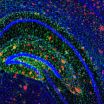(Press-News.org) CINCINNATI—Investigators at the University of Cincinnati have found a safe and effective treatment for life-threatening angioedema attacks in the emergency department.
In angioedema, patients experience a rapid swelling of the skin and subcutaneous tissues—which, in some cases, can lead to airway obstruction and suffocation. Physicians usually treat angioedema like an allergic reaction with corticosteroids and antihistamines.
But that therapy doesn't always work for another version of the condition, thought to be caused by taking a class of drugs known as ACE inhibitors.
"ACE inhibitors are a common treatment in patients with congestive heart failure and hypertension," says Joseph Moellman, MD, associate professor of emergency medicine. "It is also the most common etiology of patients presenting to the emergency department with angioedema."
Moellman says there's currently no treatment for ACE inhibitor induced (ACEI) angioedema, as the physiology of the condition is different—caused by the levels of the blood vessel-dilating peptide bradykinin in the body.
In a triple blind, placebo-controlled phase-2 trial, Moellman worked with professor of medicine and angioedema expert Jonathan Bernstein, MD, and fellow researchers at the UC Medical Center Emergency Department to study the drug Ecallantide in the treatment of ACEI angioedema that failed to respond to the conventional therapy of corticosteroids and antihistamines.
They wanted to see if Ecallantide, which has already safely treated acute attacks of hereditary angioedema, could help patients with ACEI angioedema—specifically, if it could make them eligible for discharge within four hours of treatment.
After enrolling 50 patients in the study, they found that patients treated with Ecallantide were more likely to meet discharge sooner than those receiving antihistamines and steroids—31 percent of Ecallantide patients were eligible for discharge within four hours, as compared with 21 percent of patients receiving placebos. Additionally, patients experienced few side effects from the medication.
Moellman says the data supports launching a phase-3 trial, which will enroll more patients to confirm the initial results. He is presenting the results at the annual meeting of the Society for Academic Emergency Medicine, held May 14-17 in Dallas.
INFORMATION:
Co-authors of the study include Christopher Lindsell, PhD, Kimberly Hart and Sean Collins, MD. The study was funded by Dyax, manufacturer of Ecallantide, or Kalibtor. Bernstein is a consultant and speaker for Dyax.
A better way to treat ACE inhibitor angioedema in the ED
2014-05-14
ELSE PRESS RELEASES FROM THIS DATE:
Obesity associated with longer hospital stays, higher costs in total knee replacement patients
2014-05-14
ROSEMENT, Ill.─ Obesity is associated with longer hospital stays and higher costs in total knee replacement (TKR) patients, independent of whether or not the patient has an obesity-related disease or condition (comorbidity), according to a new study published in the Journal of Bone and Joint Surgery (JBJS).
More than half of TKR patients have a body mass index (BMI) within the obesity range (greater than 30 kg/m²), which has been linked to a higher risk for related comorbidities such as diabetes, hypertension, osteoarthritis; and in some studies, to higher medical ...
California Central Valley groundwater depletion slowly raises Sierra Nevada mountains
2014-05-14
Winter rains and summer groundwater pumping in California's Central Valley make the Sierra Nevada and Coast Mountain Ranges sink and rise by a few millimeters each year, creating stress on the state's faults that could increase the risk of an earthquake.
Gradual depletion of the Central Valley aquifer, because of groundwater pumping, also raises these mountain ranges by a similar amount each year--about the thickness of a dime--with a cumulative rise over the past 150 years of up to 15 centimeters (6 inches), according to calculations by a team of geophysicists.
The ...
Nanowire bridging transistors open way to next-generation electronics
2014-05-14
VIDEO:
UC Davis engineer Saif Islam explains how growing semiconductor nano-sized wires and bridges on silicon can lead to a new generation of robust electronic devices.
Click here for more information.
A new approach to integrated circuits, combining atoms of semiconductor materials into nanowires and structures on top of silicon surfaces, shows promise for a new generation of fast, robust electronic and photonic devices. Engineers at the University of California, Davis, have ...
Societies publish recommendations to guide minimally invasive valve therapy programs for patients
2014-05-14
WASHINGTON, D.C., BEVERLY, MA, and CHICAGO (May 15, 2014) – As minimally invasive therapies are increasingly used to treat diseased heart valves, newly published recommendations provide guidance on best practices for providing optimal care for patients. The document released today offers first-time guidance from four professional medical associations on developing and maintaining a transcatheter mitral valve therapy program, emphasizing collaboration between interventional cardiologists and cardiac surgeons. The document is an important step toward achieving consistent, ...
Inhibiting protein family helps mice survive radiation exposure, Stanford study finds
2014-05-14
STANFORD, Calif. - Tinkering with a molecular pathway that governs how intestinal cells respond to stress can help mice survive a normally fatal dose of abdominal radiation, according to a new study by researchers at the Stanford University School of Medicine.
Because the technique is still partially effective up to 24 hours after exposure, the study suggests a possible treatment for people unintentionally exposed to large amounts of radiation, such as first responders at the Chernobyl nuclear disaster in 1986.
"We were very surprised by the amount of protection the ...
Antidepressant may slow Alzheimer's disease
2014-05-14
A commonly prescribed antidepressant can reduce production of the main ingredient in Alzheimer's brain plaques, according to new research at Washington University School of Medicine in St. Louis and the University of Pennsylvania.
The findings, in mice and people, are published May 14 in Science Translational Medicine. They support preliminary mouse studies that evaluated a variety of antidepressants.
Brain plaques are tied closely to memory problems and other cognitive impairments caused by Alzheimer's disease. Stopping plaque buildup may halt the disastrous mental ...
Can anti-depressants help prevent Alzheimer's disease?
2014-05-14
PHILADELPHIA – A University of Pennsylvania researcher has discovered that the common selective serotonin reuptake inhibitor (SSRI) citalopram arrested the growth of amyloid beta, a peptide in the brain that clusters in plaques that are thought to trigger the development of Alzheimer's disease (AD). Penn, in collaboration with investigators at Washington University, tested the drug's effects on the brain interstitial fluid (ISF) in plaque-bearing mice and the cerebrospinal fluid (CSF) of healthy human subjects to draw its conclusions, which are detailed in the new issue ...
Hitting a moving target
2014-05-14
LA JOLLA, CA—May 14, 2014—A vaccine or other therapy directed at a single site on a surface protein of HIV could in principle neutralize nearly all strains of the virus—thanks to the diversity of targets the site presents to the human immune system.
The finding, from a study led by scientists at The Scripps Research Institute (TSRI), is likely to influence future designs for HIV vaccines and antibody-based therapies.
"We found, for example, that if the virus tries to escape from an antibody directed at that site by eliminating one of its sugars, the antibody often ...
Deformable mirror corrects errors
2014-05-14
This news release is available in German.
Lasers are used in manufacturing to cut materials or weld components together. Laser light is focused to a point using various lenses and mirrors; the smaller the focal point and the higher the energy, the more accurately operators can work with the laser. So, turn up the power and off you go, right? It is not that simple because when laser power increases, the mirror heats up accordingly, causing it to deform. A deformed mirror cannot effectively focus the laser; the focal point gets bigger and laser power falls away.
Precisely ...
Victims want to change, not just punish, offenders
2014-05-14
Revenge is a dish best served with a side of change.
A series of experiments conducted by researchers affiliated with Princeton University has found that punishment is only satisfying to victims if the offenders change their attitude as a result of the punishment.
"Revenge is only 'sweet' if the person reacts with a change in attitude, if the person understands that what they did was wrong. It is not the act itself that makes punishment satisfying," said Friederike Funk, a Princeton graduate student in psychology and one of the researchers.
The findings offer insights ...





